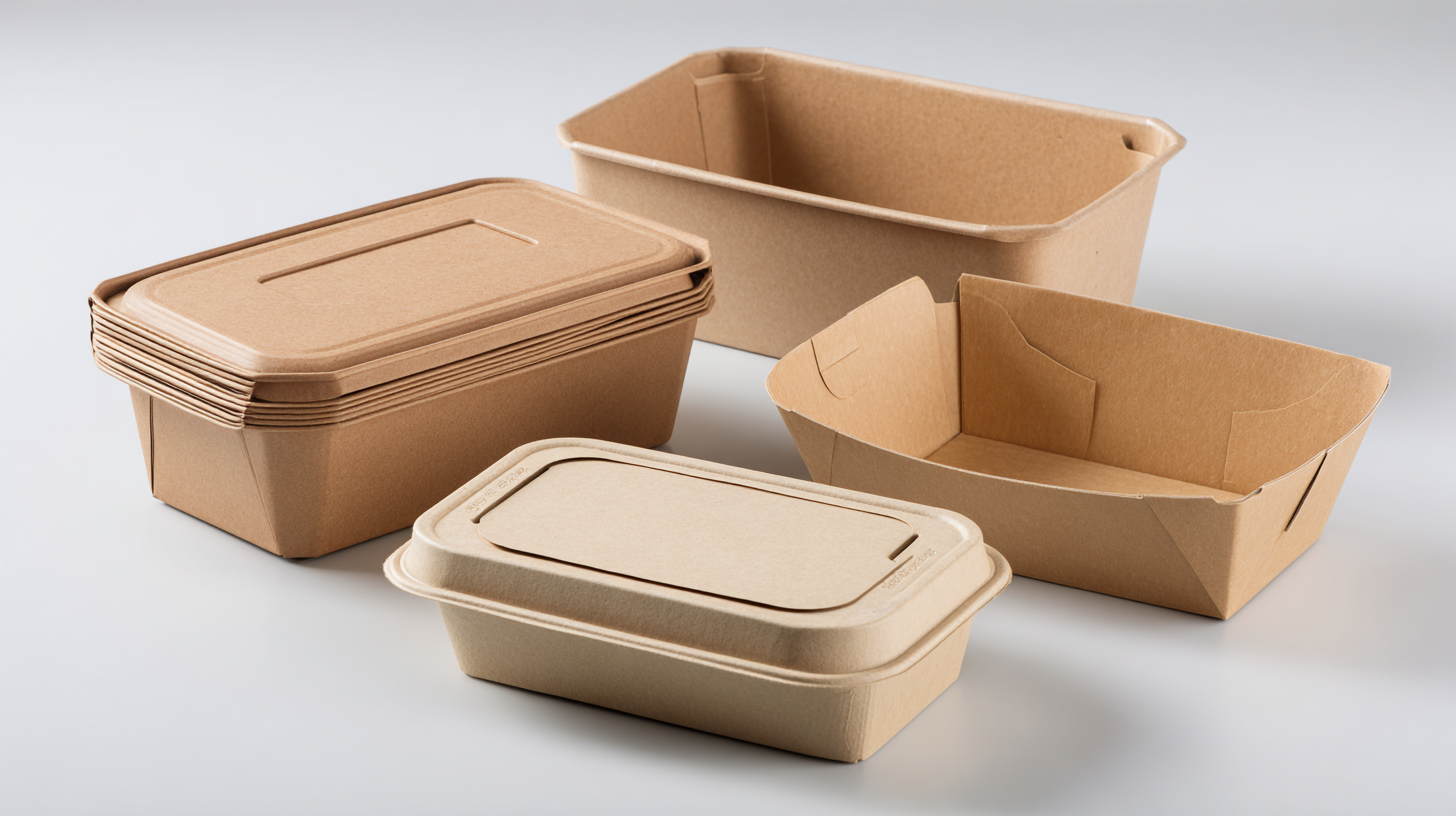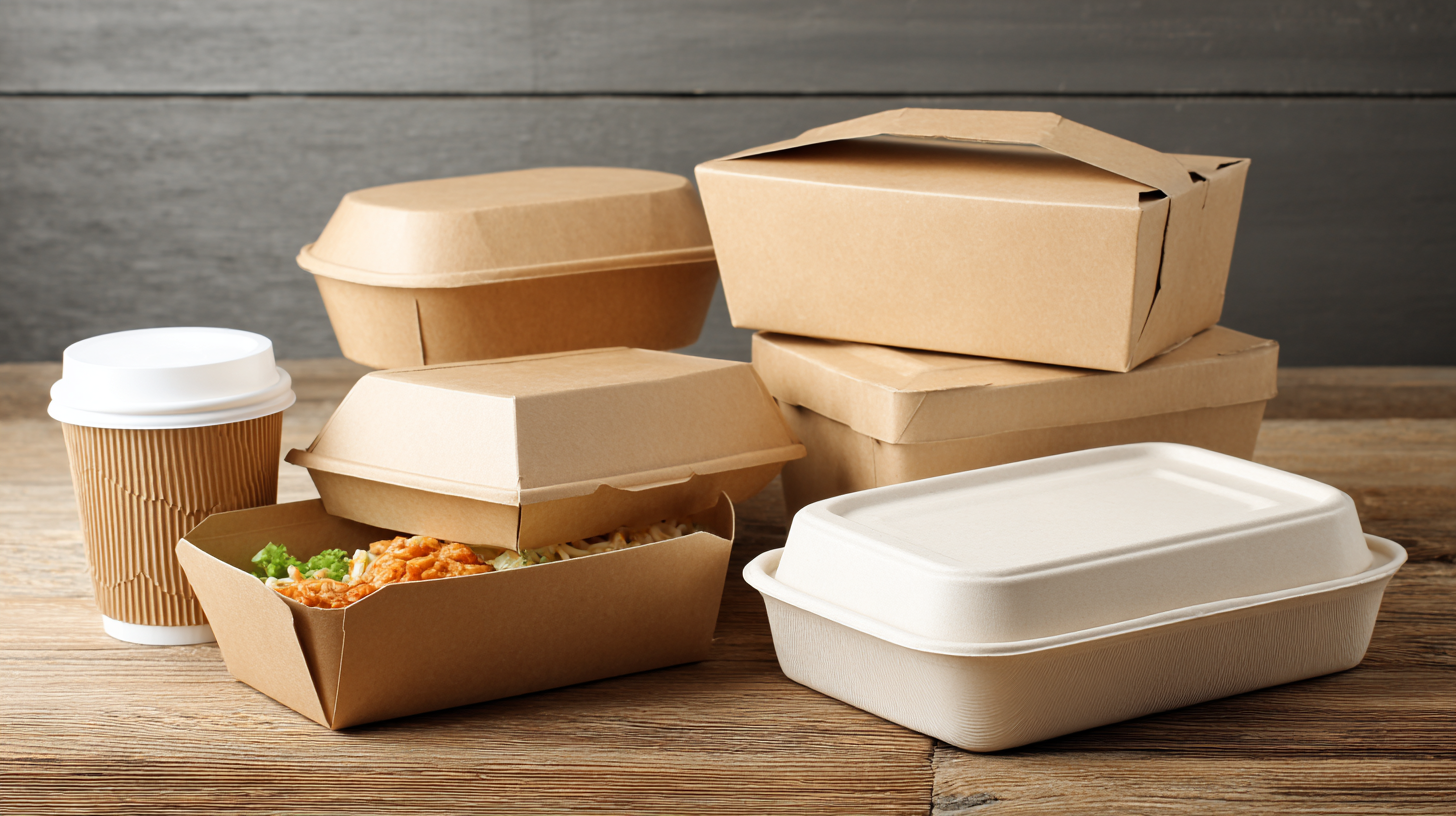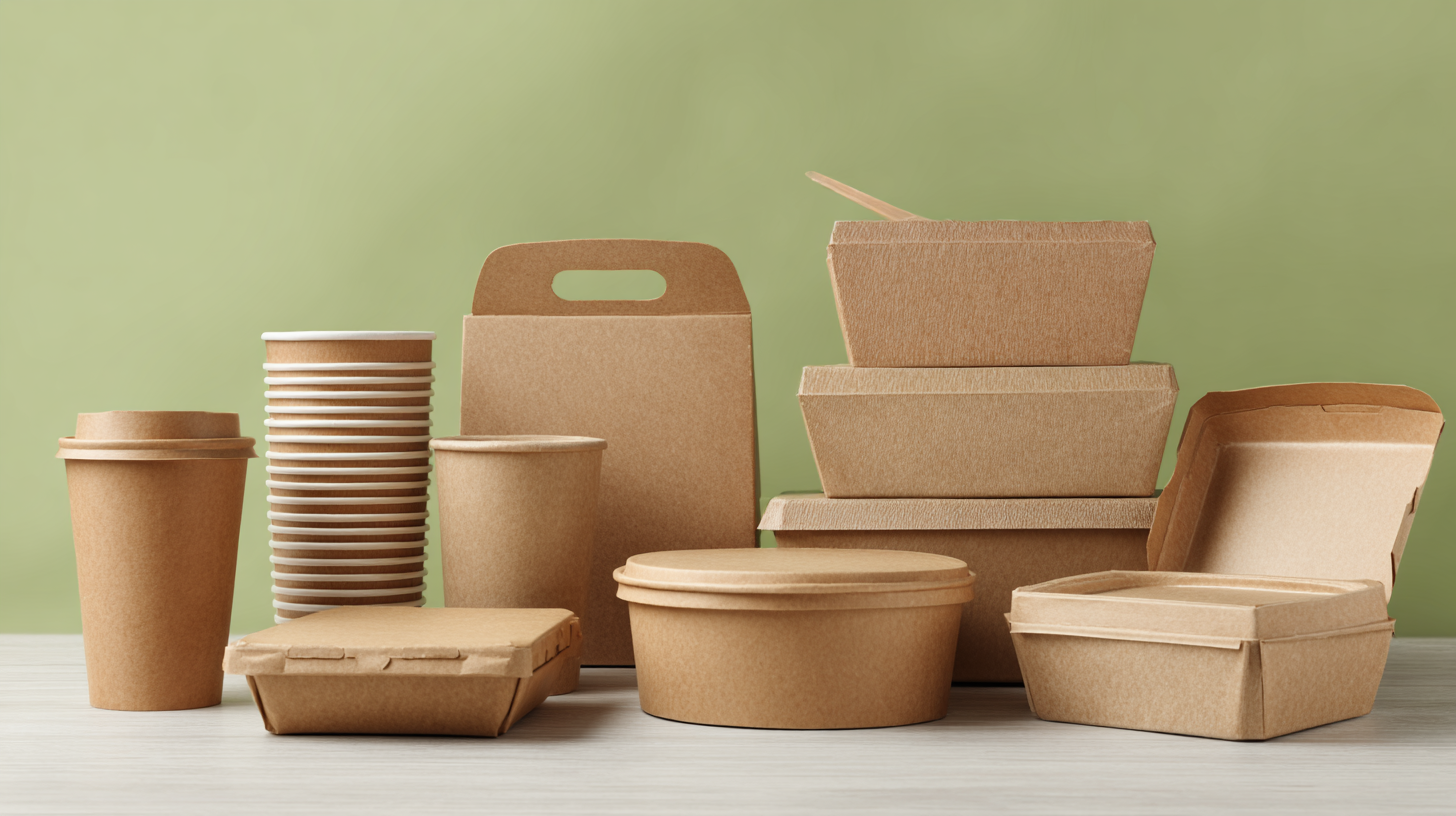
Blog
Revolutionizing Food Packaging Containers for 2025 The Ultimate Guide to Industry Trends and Innovations
 As we approach 2025, the food packaging containers industry is on the cusp of a significant transformation, driven by innovative designs and an increased focus on sustainability. According to a report by Market Research Future, the global food packaging market is projected to reach USD 500 billion by 2025, growing at a CAGR of 5.7% from 2019 to 2025. This surge is largely influenced by evolving consumer preferences for eco-friendly materials and smarter packaging solutions that enhance food safety and shelf life. However, the industry also faces several challenges, including the need for standardization in production processes and addressing plastic waste concerns. This ultimate guide delves into the latest trends and innovations reshaping food packaging containers, emphasizing the importance of adapting to these changes to stay competitive in a fast-evolving market environment.
As we approach 2025, the food packaging containers industry is on the cusp of a significant transformation, driven by innovative designs and an increased focus on sustainability. According to a report by Market Research Future, the global food packaging market is projected to reach USD 500 billion by 2025, growing at a CAGR of 5.7% from 2019 to 2025. This surge is largely influenced by evolving consumer preferences for eco-friendly materials and smarter packaging solutions that enhance food safety and shelf life. However, the industry also faces several challenges, including the need for standardization in production processes and addressing plastic waste concerns. This ultimate guide delves into the latest trends and innovations reshaping food packaging containers, emphasizing the importance of adapting to these changes to stay competitive in a fast-evolving market environment.
Emerging Materials: How Biodegradable Packaging is Changing the Game
The landscape of food packaging is undergoing a radical transformation as biodegradable materials take center stage. With increasing environmental awareness, both consumers and manufacturers are seeking sustainable alternatives to traditional plastics. Emerging materials such as plant-based polymers and compostable films not only reduce waste but also offer enhanced properties for preserving food freshness. These innovations are designed to break down naturally, minimizing their impact on landfills and ecosystems.
Moreover, the advancements in biodegradable packaging are paving the way for new design possibilities. Companies are experimenting with innovative structures that provide better barrier properties while remaining eco-friendly. For instance, some brands are utilizing mushroom mycelium and seaweed extracts, which not only serve as effective packaging solutions but also add a unique aesthetic appeal to the products. As 2025 approaches, the integration of these materials into food packaging will likely reshape consumer perceptions and industry standards, making sustainability an integral part of the food supply chain.
Revolutionizing Food Packaging: Biodegradable Packaging Trends
This chart illustrates the projected growth of the biodegradable packaging market from 2019 to 2025, showcasing the significant increase in market value driven by rising eco-conscious consumer preferences and regulatory changes favoring sustainable practices.
Smart Packaging Technologies: Enhancing Shelf Life and Consumer Experience
The demand for innovative food packaging solutions is on the rise, driven by the growing need for sustainability and enhanced consumer experiences. Smart packaging technologies are at the forefront, utilizing advanced materials like biodegradable plastics and intelligent barriers to improve shelf life. These innovations not only protect products but also engage consumers through interactive features, such as QR codes that provide detailed product information.
One significant trend in the flexible packaging market is the increasing use of eco-friendly materials, such as plant-based plastics and recycled paper. This shift is evident across various applications, including food and beverage, pharmaceuticals, and cosmetics. Brands are increasingly investing in sustainable packaging options to meet consumer expectations and regulatory requirements, shaping the market landscape for 2025 and beyond.
**Tips:** When considering smart packaging technologies, look for solutions that not only extend shelf life but also contribute to environmental sustainability. Additionally, explore packaging that enhances the consumer experience, such as those that offer convenience and engaging interactions. Adopting these innovations can significantly boost brand loyalty and customer satisfaction.
Sustainability in Design: Eco-Friendly Practices for Future Food Containers
The food packaging industry is on the brink of a major transformation as sustainability takes center stage in design practices for 2025. Eco-friendly materials are becoming the norm, with options such as biodegradable plastics, recycled paper, and plant-based materials gaining traction. Companies are increasingly recognizing the importance of reducing their environmental footprint, prompting innovations that ensure food safety while being kind to the planet. By using sustainable materials, brands not only cater to the growing consumer demand for eco-conscious products but also contribute to a circular economy.
In addition to materials, design practices are evolving to prioritize environmental impact. Minimalist packaging, which reduces excess material usage, and aseptic solutions that eliminate the need for preservatives are gaining popularity. Furthermore, reusable packaging systems are emerging, encouraging consumers to return or refill containers. This shift towards sustainable design not only improves brand image but also aligns with the values of the eco-conscious consumer. As we approach 2025, the food packaging sector stands poised to embrace innovations that prioritize sustainability, reshaping the future of food and our environment.

Cost-Effectiveness of Innovative Packaging: Balancing Quality and Affordability
As the food packaging industry evolves, balancing cost-effectiveness with quality has become crucial. According to a recent report by Smithers Pira, the global food packaging market is projected to reach $400 billion by 2025, with innovations playing a significant role in maintaining affordability while enhancing sustainability. Companies are shifting toward materials that are not only economically viable but also environmentally friendly, such as biodegradable films and recycled plastics, significantly reducing production costs without compromising quality.
**Tip:** When selecting packaging materials, consider the total lifecycle cost, which includes production, transportation, and disposal. Opting for lightweight materials can decrease shipping costs and carbon emissions, offering long-term savings.
Additionally, advancements in smart packaging technologies, like moisture sensors and temperature indicators, are enabling brands to ensure product quality while minimizing waste. A study from the Packaging Association reveals that adopting such technologies can improve product shelf life by up to 40%, thereby increasing consumer satisfaction and reducing losses from spoiled goods.
**Tip:** Engage with packaging suppliers who specialize in innovative designs. Collaborating early in the product development process allows businesses to explore options that optimize cost while delivering maximum functionality.

Consumer Trends: What Shoppers Want from Food Packaging in 2025
As we look toward 2025, consumers are becoming increasingly discerning about their food packaging. Eco-friendliness stands at the forefront of these preferences, with shoppers seeking containers made from sustainable materials that minimize environmental impact. Brands that prioritize biodegradable and recyclable packaging are not just appealing to eco-conscious customers but are also enhancing their overall market image.
Tips: To meet this demand, consider adopting innovative materials, such as plant-based plastics or compostable containers, which can greatly enhance brand loyalty. Additionally, transparency in sourcing and manufacturing processes can foster trust among consumers who value authenticity in their purchases.
In addition to sustainability, convenience remains a crucial factor. Shoppers want packaging that is easy to open, reseal, and dispose of. They appreciate single-serving sizes that fit their on-the-go lifestyles without creating unnecessary waste.
Tips: To cater to this trend, think about incorporating versatile designs that allow for both bulk and single-use consumption. User-friendly features, such as clear labeling and easy-to-read nutritional information, can further enhance the shopping experience. By aligning with these preferences, brands can secure a competitive edge in the evolving food packaging landscape.
Revolutionizing Food Packaging Containers for 2025
| Trend | Description | Consumer Preference | Expected Impact |
|---|---|---|---|
| Sustainable Materials | Increasing demand for biodegradable and recyclable packaging options. | 75% of consumers prefer eco-friendly packaging. | Enhances brand image and loyalty. |
| Smart Packaging | Integration of technology for freshness tracking and consumer interaction. | 60% of shoppers find smart packaging appealing. | Increases consumer engagement and trust. |
| Resealable Packaging | Convenience-driven designs that allow products to be accessed multiple times. | 70% of consumers prefer resealable options. | Reduces food waste and increases usability. |
| Minimalist Design | Focus on simplicity and clarity in packaging visuals. | 65% appreciate clean and straightforward designs. | Enhances shelf appeal and customer understanding. |
| Portion Control | Packaging that promotes healthier portion sizes. | 80% want packaging that helps manage portion sizes. | Supports health-conscious purchasing decisions. |
